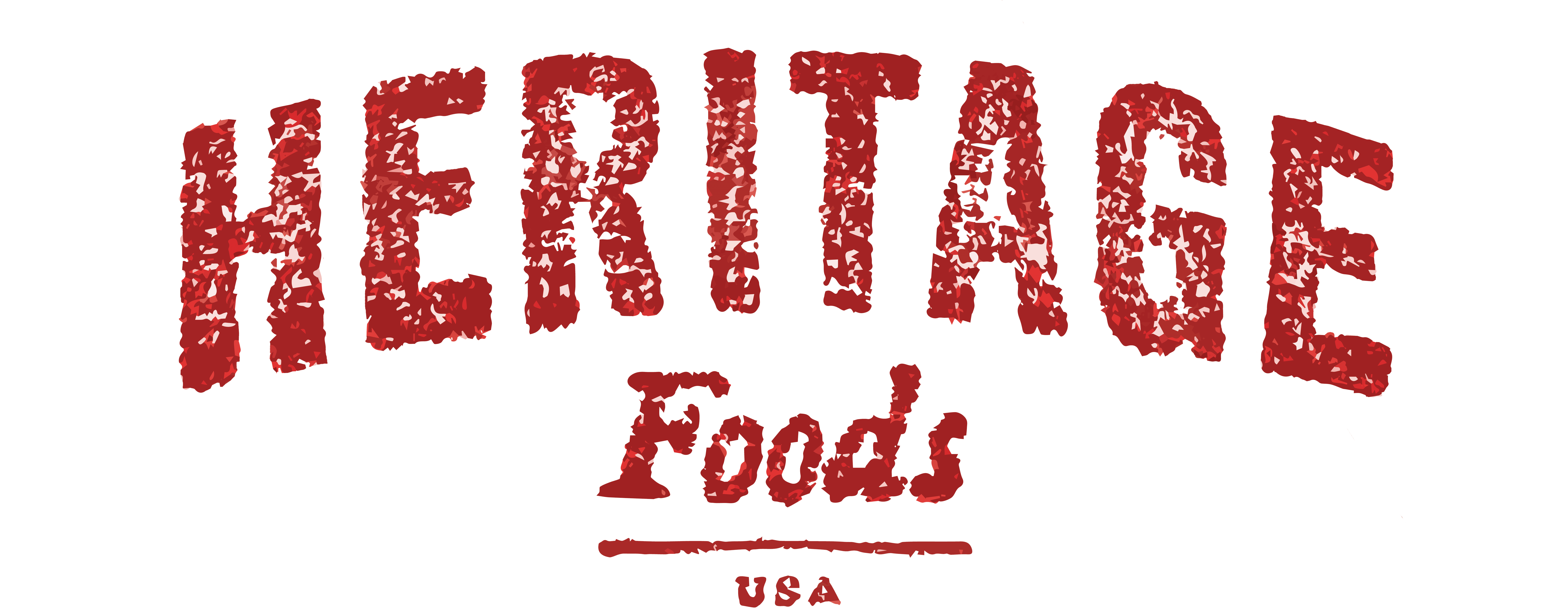We are shipping for Saturday delivery! All orders placed today will ship today unless you provide a future ship date in the notes box!
100% Customer Satisfaction Guaranteed | Shop Our Bestsellers!
Call or email us with any questions at (718) 389-0985 or info@HeritageFoodsUSA.com!
All our Provisions ship FREE!
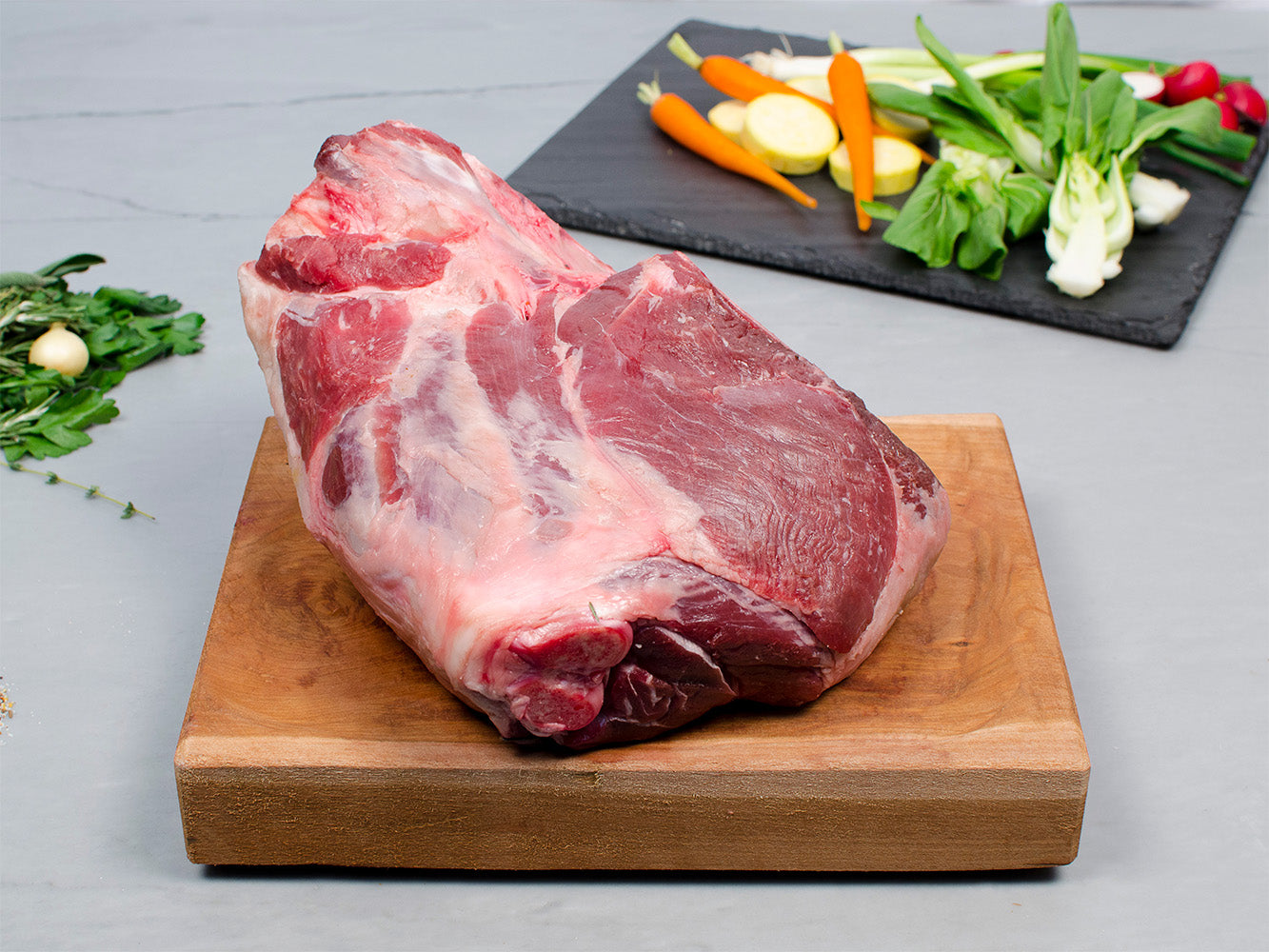
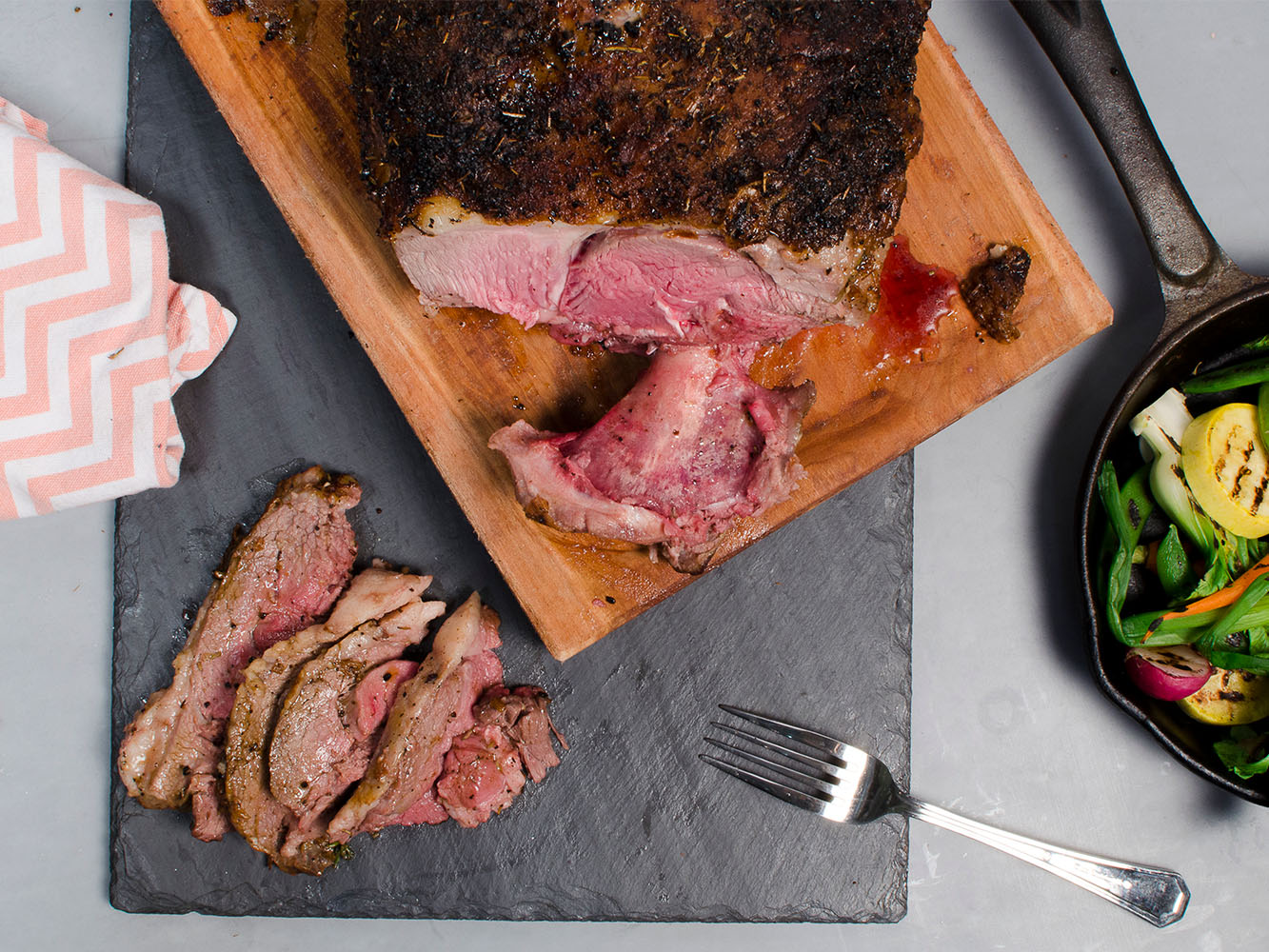
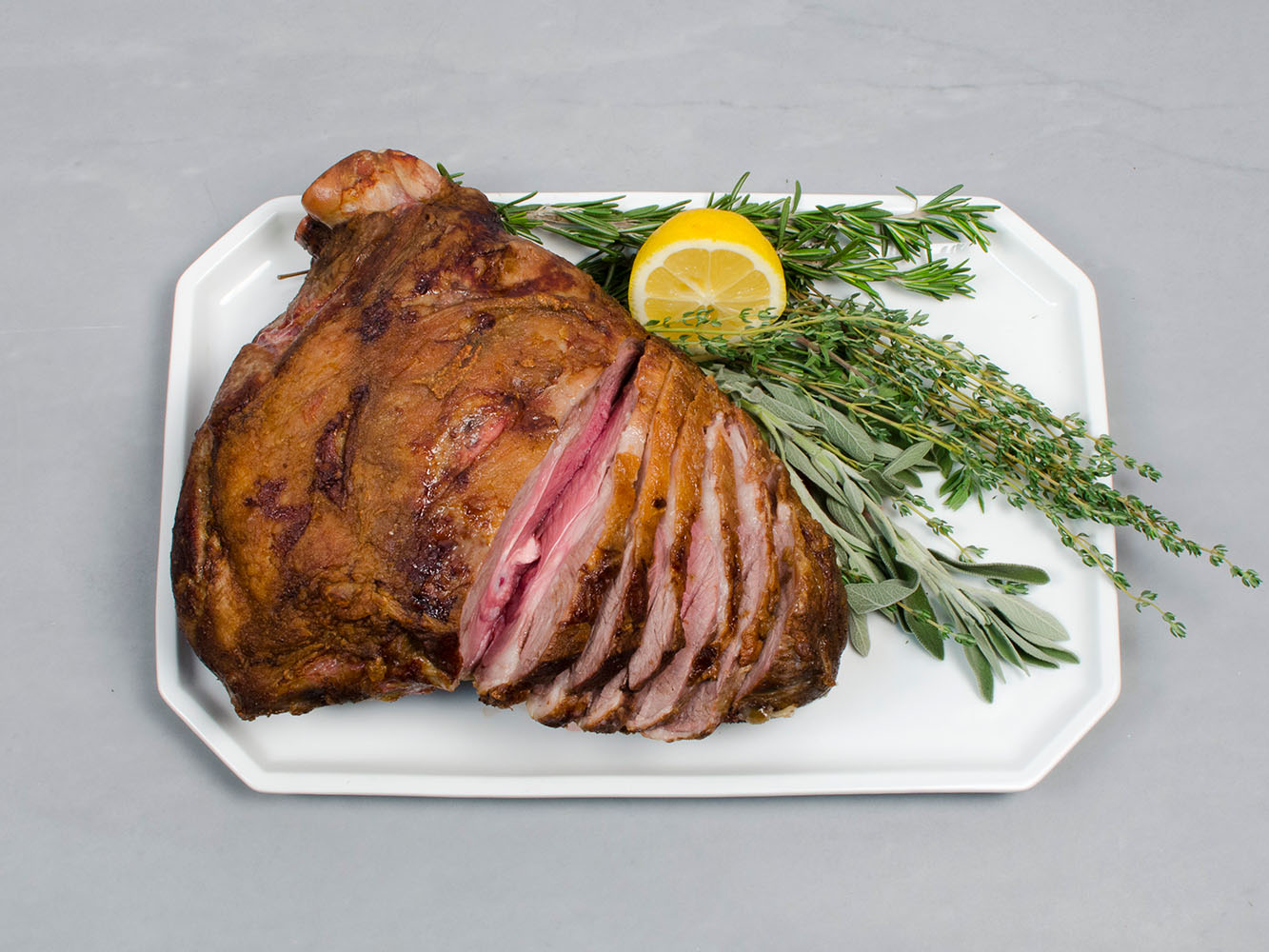
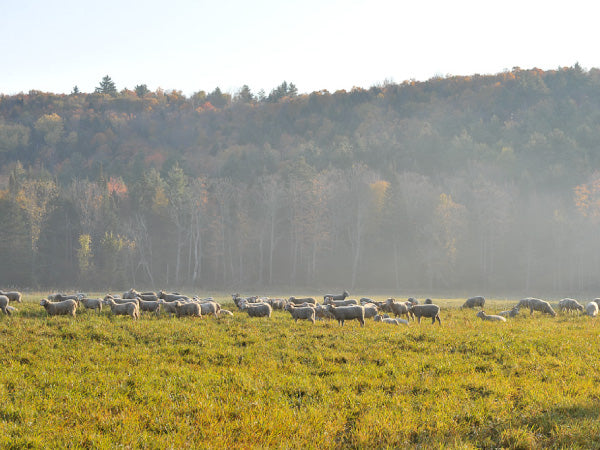
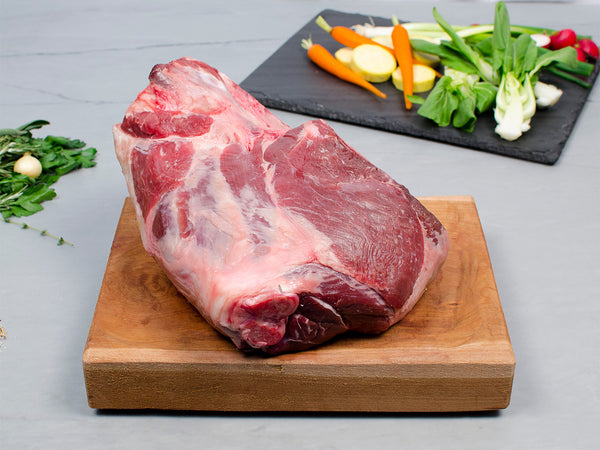
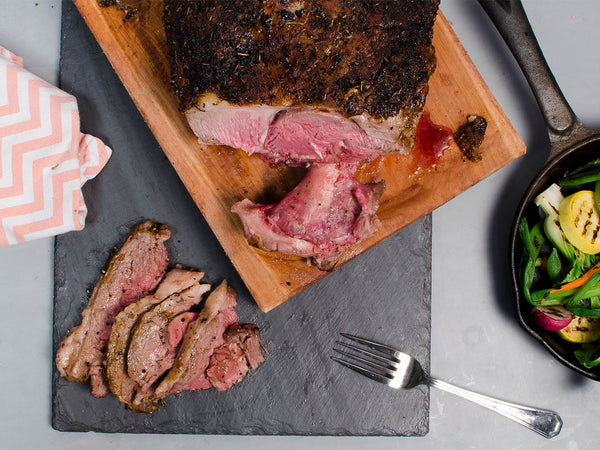






Bone-in — from America's most marbled, pasture-raised Heritage breeds — Tunis or Dorset Horn
Leg of Lamb
Bone-in, Tunis or Dorset Horn
The lamb leg is popular year round as a centerpiece or cut into sandwiches due to its dark, melt-in-your-mouth meat and meat-to-bone ratio. 100% Heritage breed lamb is a marvelous gastronomic pleasure and much milder and more pleasant to the palate than regularly available lamb.
Our lamb is sourced from our long time farm partners in Vermont, Tamarack Sheep Farm, where three rare breeds of lamb are raised on pasture — breeds that have been raised there since the 1920s. Lamb is a seasonal livestock that is available four or five times a year.
Ben Machin and Grace Bowmer raise three breeds of heritage breed sheep on their beautiful Tamarack Sheep Farm located on the rolling hills and green pastures of Vermont.
As Ben explains, “Grass, it is at the heart of our operation, and restoring grassland and soil is one of the reasons that we scaled up our operation.” All of the animals on Tamarack Farm have access to grass 100% of the time. In the summer, this means grass growing in the field, in the winter, or for animals that are housed in the barn, this means hay.
Ben and Grace make all their own hay, managing about 120 acres of hay land. They have four old John Deere tractors, and all the equipment to make round bales. They fertilize the fields and cut them three or four times each year to keep the quality high. Supplements for the lamb include whole grains as opposed to ground or pellet feed.
Most of the more successful commercial breeds of lamb are a mix of quite a few other breeds — hybrid vigor is a really big deal in the industry. But Ben and Grace are 100% committed to heritage breeds, both because they have a family tradition that’s almost 100 years old, and because they feel that the genetics are potentially quite important to the future.
The fastest growing sheep breed worldwide is the hybrid White Dorper and it would not exist if not for the foundational Horned Dorset genetics that were used to create it, the kind currently grown on Tamarack Farm. Dorpers are proving essential to allowing sheep farmers to adapt to climate change in various parts of the world, and it’s the heritage breed in them that allows them to be so resistant and strong. Ben and Grace have participated in a program with the Swiss Village Foundation and the Smithsonian, who collected eggs and semen from 80 of their animals over a 10-year period to store in cryogenic freezers.
There are incredible challenges to raising heritage breed animals. Heritage breeds are inherently less productive, in general, than the modern breeds. But for Ben and Grace it’s worth it: Ben’s great-grandfather started a Tunis flock in the 1920s. Years later, Ben's grandfather, Herb, began to work with Dorset Horn sheep for a 4-H project. In 2006, in Herb’s last days, Ben made the monumental and wonderful decision to dedicate himself to revitalizing the family flock. Grace joined Ben in 2008. Grace came with a background in architecture, site design, landscaping, and gardening, and together they purchased the land and built a barn.
Today with a fifth generation in the mix, there is even more reason to continue their efforts on the farm despite new challenges. Many of their local restaurant customers have taken a beating with recent global events, but sunny days on grassy pastures look to be in the future, which is good news for chefs and lovers of lamb! Ben and Grace have increased production on Hogget (1-2 year old sheep) and mutton (2+ year old sheep) on their farm because of increased demand.
According to Ben, the Tunis breed is lean but has the richest taste of all. He remembers the Navajo Churro as being a bit drier but still delicious and succulent. The Dorset Horn is very moist and mild flavored. Ben especially loves the Horned Dorset, “because both males and females grow horns!” Amazingly the taste and flavor of all three breeds becomes more subtle and mild as the animal ages on the hoof.
The Tunis is earthy with notes of buttermilk. The Dorset is lighter, with a clean, floral finish. The Navajo-Churro lamb is remarkably tender — even the braising cuts can be grilled.
Tunis, Dorset Horn, and Navajo-Churro Breeds of Lamb
Tunis: Originally from Tunisia, the breed was brought to the U.S. as a gift to George Washington and raised by the first three Presidents. This is the same lamb as was written about in the Bible, but the modern version has a less fatty tail.
Dorset Horn: A breed of sheep that spread over Dorset, Somerset, Devon, and most of Wales, in the 1750s this is the breed the English with a fine palate would eat for Christmas! Very few farmers still raise this endangered breed.
Navajo-Churro: The first domesticated livestock to ever come onto American soil, the Churro breed was brought here by early Spanish explorers and quickly adopted into the culture of the Navajo Nation in the Southwest. The breed was used for wool and meat but today is considered America’s rarest breed of lamb.
How to Prepare
1. Take the roast out of the refrigerator an hour prior to cooking.
2. Preheat your oven to 450℉.
3. Season liberally with salt and pepper on all sides.
4. Sear on all sides in a hot pan until browned.
5. Move to a roasting pan lined with a rack and cook at 450℉ for 15-20 mins for an even crust.
6. Lower the oven temperature to 300℉ and cook for 30 minutes checking the meat every 15 minutes thereafter until the roast reaches your desired internal temperature (130℉ approximately for lamb to medium rare.) The internal temperature will continue to rise slightly after leaving the oven. Let rest for 10-15 minutes before carving.
———————
Our favorite leftover suggestions:
Lamb Ragù Rigatoni
Ingredients:
8 oz roasted lamb leg, diced into ½” cubes
4 oz English peas
1 bunch asparagus diced into 1/8 inch coins stopping about 2” from the tip of the spear
3 stocks of green garlic, sliced — only the whites
4 sprigs of mint
1lb rigatoni pasta (Semolina or Winona’s Hemp)
½ cup of lamb stock
2 tablespoons unsalted butter
Parmigiano Reggiano (grated as needed)
To prepare:
1. Cook pasta in a large pot of well seasoned water according to the directions on box.
2. Meanwhile, sauté the green garlic and asparagus coins and spears with the diced lamb until lamb is lightly browned and the green garlic is tender.
3. Add the english peas and stock to the pan and bring to a boil. Add butter swirling to emulsify, toss together with pasta, and top with freshly picked mint and grated Parmigiano Reggiano.
Lamb Leg Tacos
Ingredients:
1 quart lamb stock
10-12 oz of leftover lamb leg, sliced
16 guajillo chilis
4 cloves of garlic
½ bunch of cilantro chopped (stem included)
3 oz sunflower sprouts
½ cup peeled, toasted, and salted sunflower seeds, for garnish
3 oz pea shoots
3 oz oxalis triangularis, for garnish
1 pack of tortillas (10 ct total)
2 limes cut into wedges
Water as needed
To prepare:
1. Bring 1 quart of stock with sliced lamb meat in a small pot up to a boil and reduce to a low simmer while you prepare the salsa.
2. Remove the stem and seeds from the chilis, place in a stock pot, add garlic and cilantro, and cover with with water. Bring to a boil and drop to a simmer for a minute. Turn off the heat and let sit for 15 minutes.
3. Add all the ingredients including 1-2 cups of the soaking water (add just enough to blend smooth) to a blender and puree on high until smooth. Strain through a fine mesh strainer and discard the pulp.
4. In a heavy bottom pan over medium heat add 2 tbls of neutral oil and the strained salsa and cook until the sauce is slightly reduced and coats the back of a spoon. Set aside to cool.
5. Heat tortillas over the stove top flame or grill and set aside. Toss the pea shoots and sunflower sprouts in a small amount of lime juice and salt and set aside.
To assemble the tacos:
Place 1-2 oz of lamb meat on each tortilla.
Spoon guajillo salsa over the meat.
Place some pea shoot/sunflower salad on top.
Garnish with oxalis and sunflower seeds.
Repeat for the rest of the tortillas.
Lamb Leg Bone Broth
Ingredients:
Remainder lamb leg bone
2 leeks, roughly chopped
5 shallots peeled and halved
2 inches of ginger sliced into coins
6 cloves of garlic smashed
1 tsp coriander seeds
Water to cover
To prepare: Add all ingredients to a pot, cover with cold, fresh water, bring to a boil, and reduce to a simmer. Cook for 4-6 hours on low. Simmer, skimming foam every so often. Once finished, strain the solids through a mesh strainer into an airtight container and keep in the fridge for a week or frozen for up to 6 months. Makes about 2.5 quarts of broth.
© 2025, Heritage Foods Powered by Shopify
